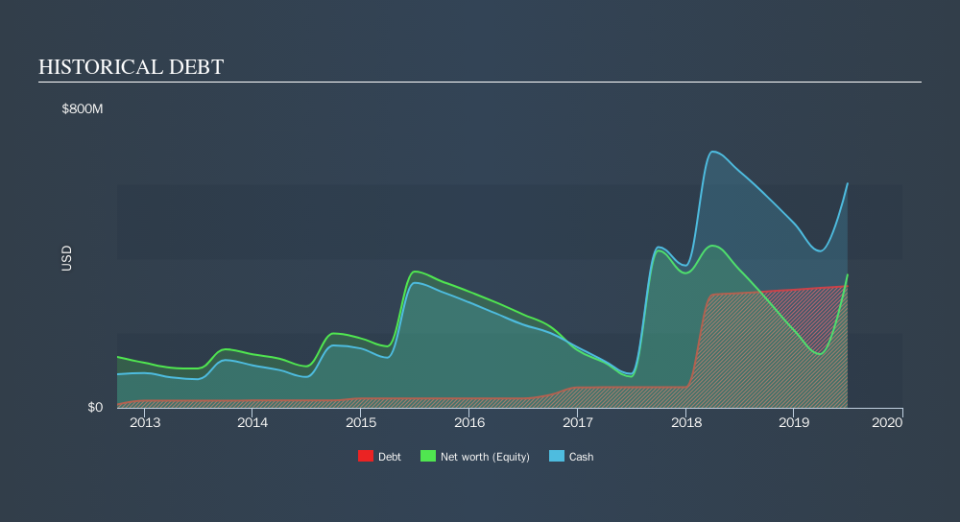Insmed (NASDAQ:INSM) Has Debt But No Earnings; Should You Worry?

Some say volatility, rather than debt, is the best way to think about risk as an investor, but Warren Buffett famously said that 'Volatility is far from synonymous with risk.' When we think about how risky a company is, we always like to look at its use of debt, since debt overload can lead to ruin. As with many other companies Insmed Incorporated (NASDAQ:INSM) makes use of debt. But the more important question is: how much risk is that debt creating?
When Is Debt A Problem?
Generally speaking, debt only becomes a real problem when a company can't easily pay it off, either by raising capital or with its own cash flow. In the worst case scenario, a company can go bankrupt if it cannot pay its creditors. However, a more frequent (but still costly) occurrence is where a company must issue shares at bargain-basement prices, permanently diluting shareholders, just to shore up its balance sheet. By replacing dilution, though, debt can be an extremely good tool for businesses that need capital to invest in growth at high rates of return. The first step when considering a company's debt levels is to consider its cash and debt together.
View our latest analysis for Insmed
What Is Insmed's Debt?
You can click the graphic below for the historical numbers, but it shows that as of June 2019 Insmed had US$326.1m of debt, an increase on US$307.2m, over one year. But on the other hand it also has US$601.3m in cash, leading to a US$275.1m net cash position.
How Healthy Is Insmed's Balance Sheet?
Zooming in on the latest balance sheet data, we can see that Insmed had liabilities of US$86.0m due within 12 months and liabilities of US$360.2m due beyond that. On the other hand, it had cash of US$601.3m and US$11.6m worth of receivables due within a year. So it actually has US$166.7m more liquid assets than total liabilities.
This short term liquidity is a sign that Insmed could probably pay off its debt with ease, as its balance sheet is far from stretched. Succinctly put, Insmed boasts net cash, so it's fair to say it does not have a heavy debt load! The balance sheet is clearly the area to focus on when you are analysing debt. But ultimately the future profitability of the business will decide if Insmed can strengthen its balance sheet over time. So if you want to see what the professionals think, you might find this free report on analyst profit forecasts to be interesting.
While it hasn't made a profit, at least Insmed booked its first revenue as a publicly listed company, in the last twelve months.
So How Risky Is Insmed?
By their very nature companies that are losing money are more risky than those with a long history of profitability. And the fact is that over the last twelve months Insmed lost money at the earnings before interest and tax (EBIT) line. And over the same period it saw negative free cash outflow of US$309m and booked a US$320m accounting loss. However, it has net cash of US$601m, so it has a bit of time before it will need more capital. Importantly, Insmed's revenue growth is hot to trot. While unprofitable companies can be risky, they can also grow hard and fast in those pre-profit years. For riskier companies like Insmed I always like to keep an eye on whether insiders are buying or selling. So click here if you want to find out for yourself.
If you're interested in investing in businesses that can grow profits without the burden of debt, then check out this free list of growing businesses that have net cash on the balance sheet.
We aim to bring you long-term focused research analysis driven by fundamental data. Note that our analysis may not factor in the latest price-sensitive company announcements or qualitative material.
If you spot an error that warrants correction, please contact the editor at editorial-team@simplywallst.com. This article by Simply Wall St is general in nature. It does not constitute a recommendation to buy or sell any stock, and does not take account of your objectives, or your financial situation. Simply Wall St has no position in the stocks mentioned. Thank you for reading.

 Yahoo Finance
Yahoo Finance 
